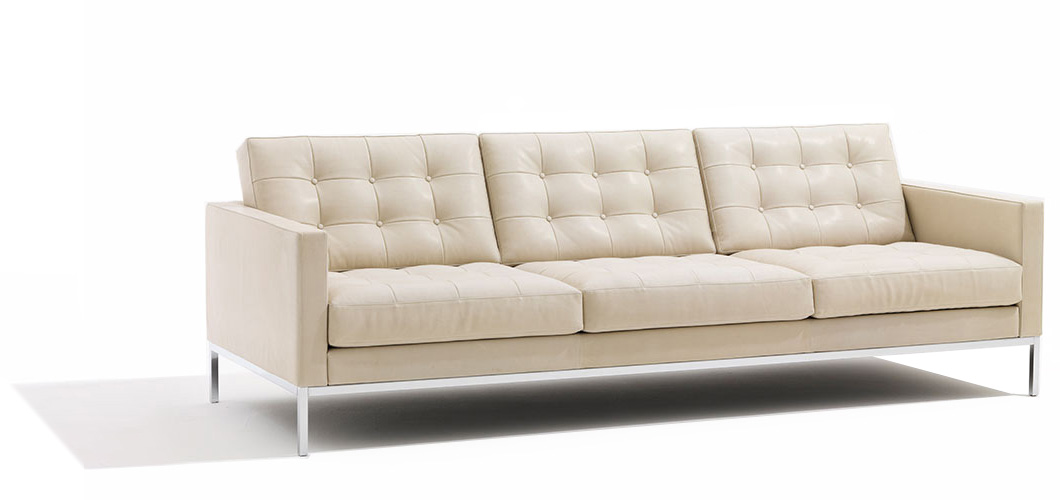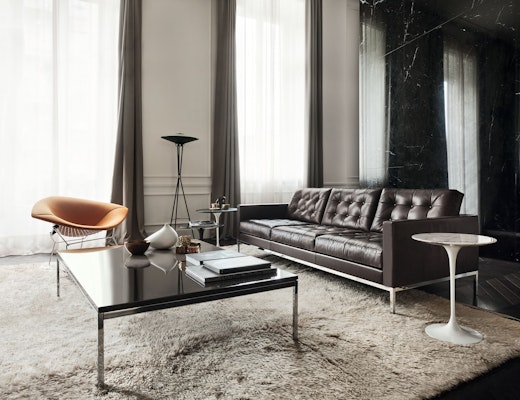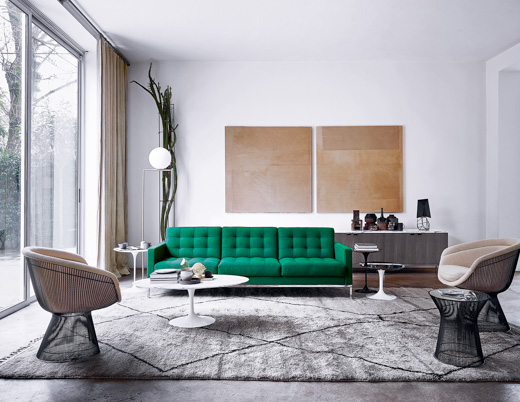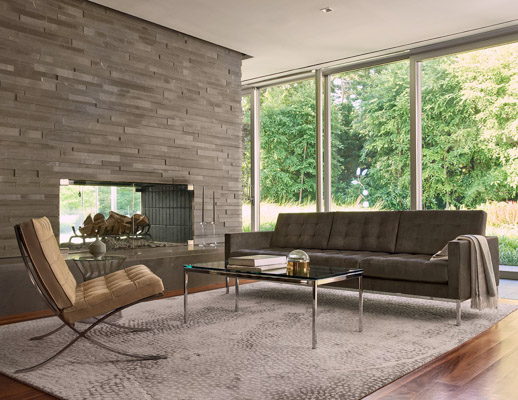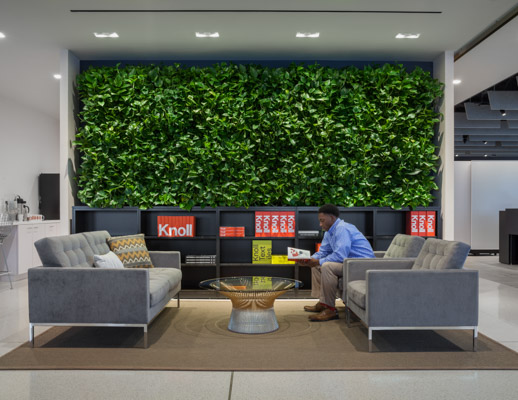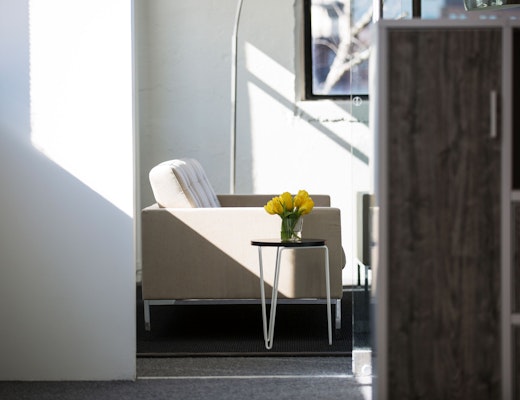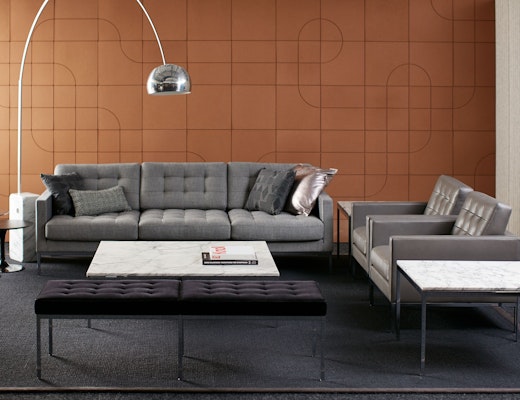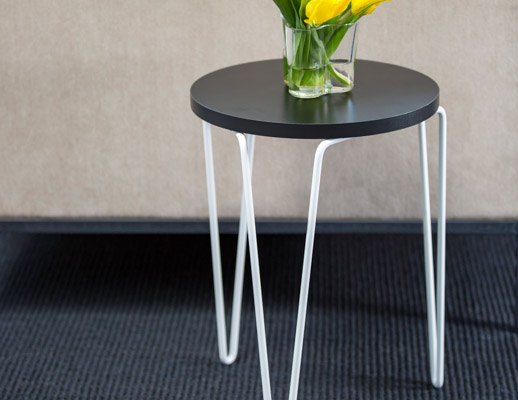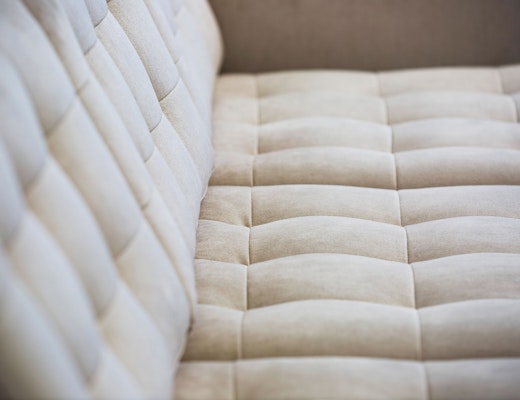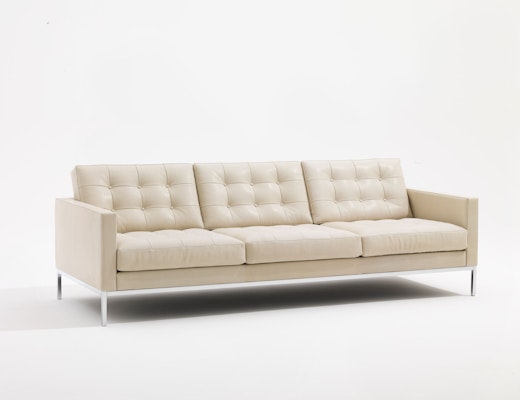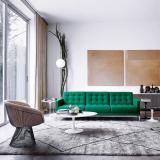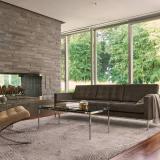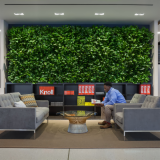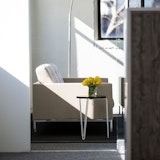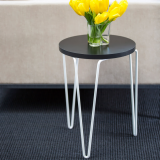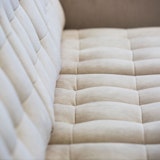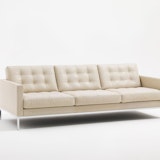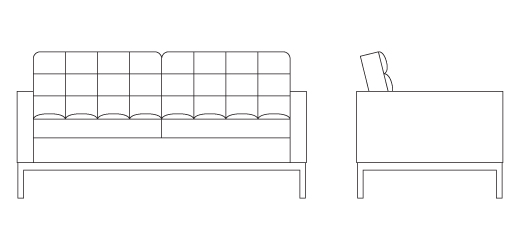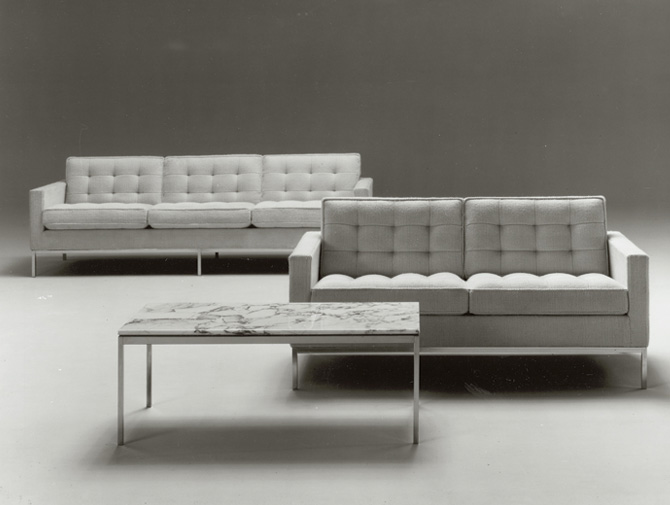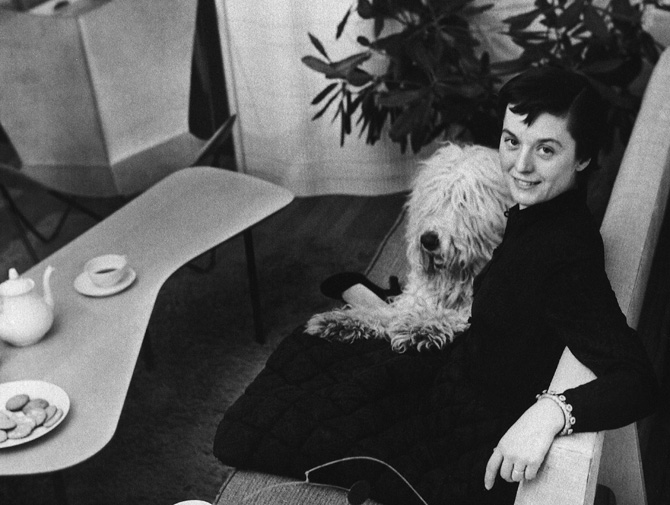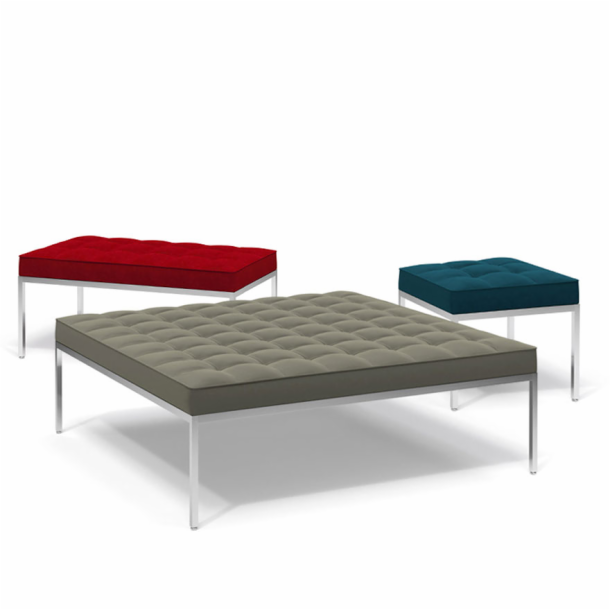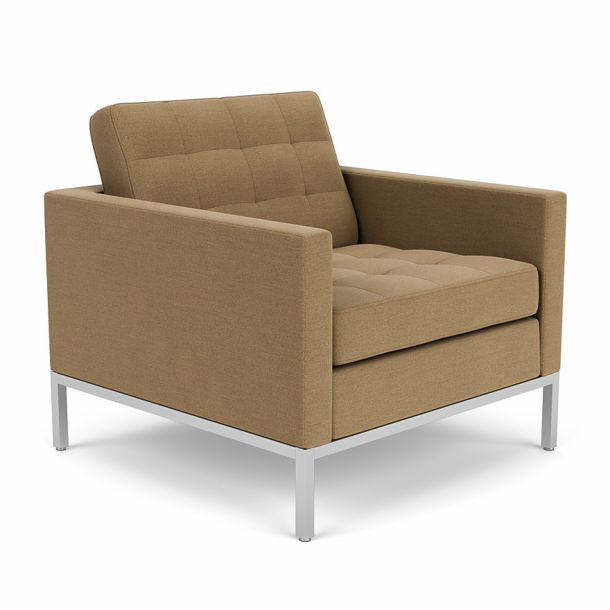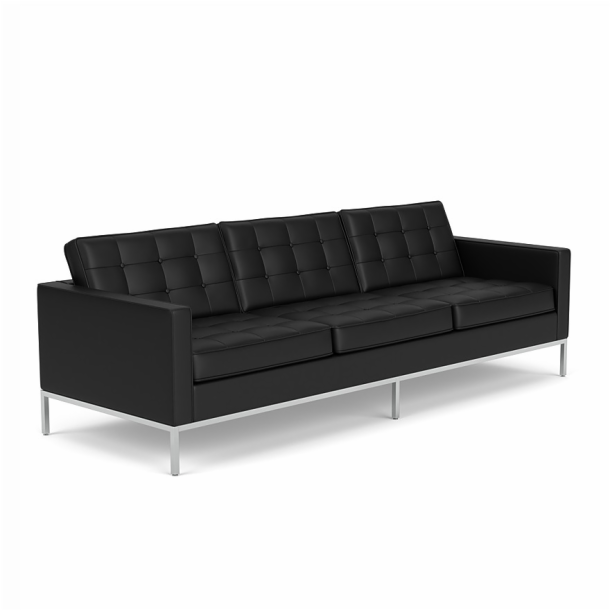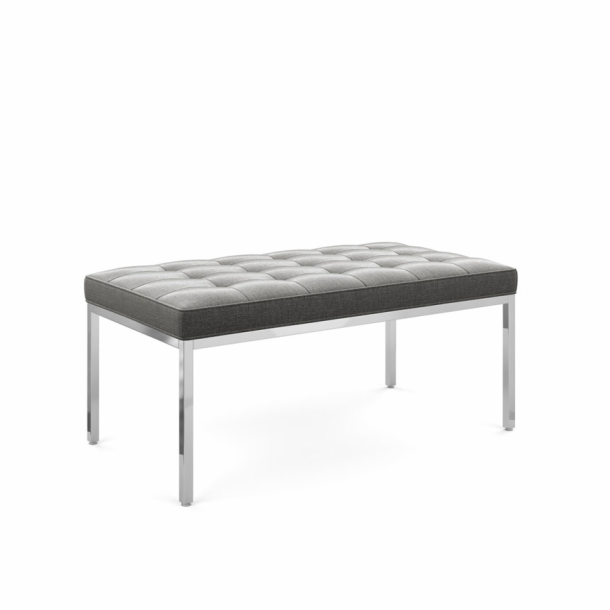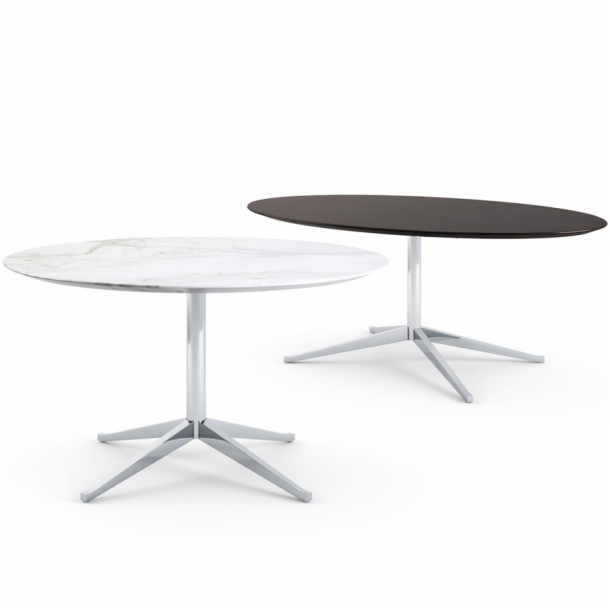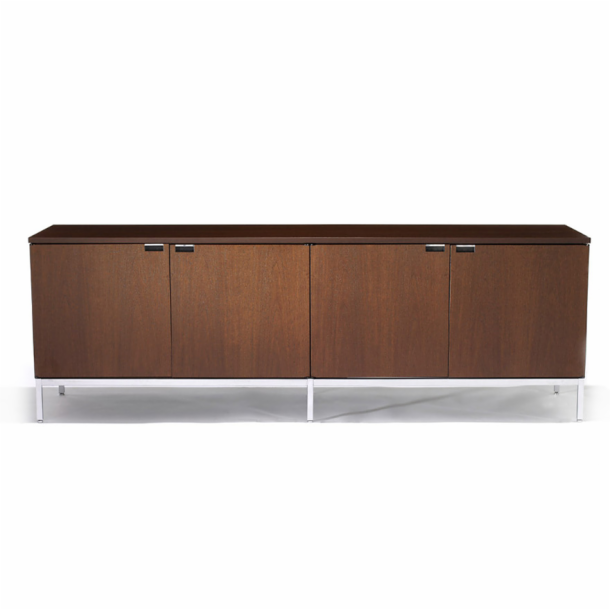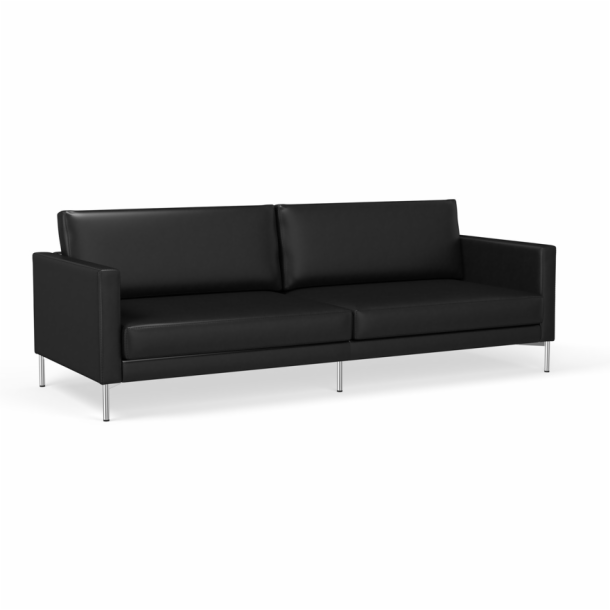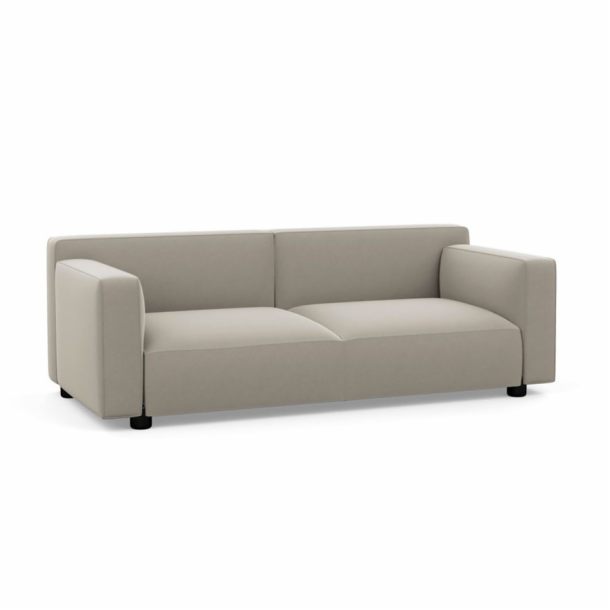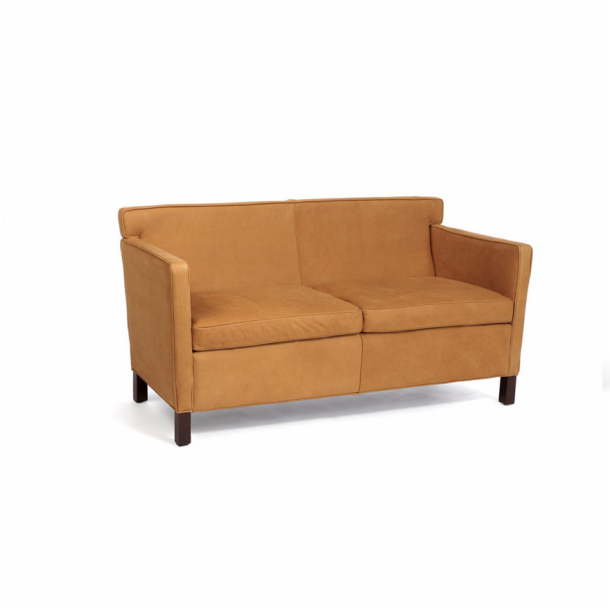As head of the Knoll Planning Unit, Florence Knoll always approached furniture design with the larger space in mind. Most important to her was how a piece fit into the greater whole — the room, the floor, the building. Every element of a Knoll-planned space supported the overall design and complemented the existing architecture.
Never one to compromise, Florence would often design furniture when she “needed the piece of furniture for a job and it wasn’t there.” And while she never regarded herself as a furniture designer, her quest for harmony of space and consistency of design led her to design several of Knoll’s most iconic pieces—all simple, none plain.
As skyscrapers rose up across America during the post-war boom, Florence Knoll saw it as her job to translate the vocabulary and rationale of the modern exterior to the interior space of the corporate office. Thus, unlike Saarinen and Bertoia, her designs were architectural in foundation, not sculptural. She scaled down the rhythm and details of modern architecture while humanizing them through color and texture.
Her lounge collection, designed in 1954, is a perfect example of her restrained, geometric approach to furniture, clearly derived from her favorite mentor, Mies van der Rohe. Knoll introduced the Florence Knoll Relaxed Seating collection in celebration of the designer’s 100th birthday, offering the same spare, elegant proportions as Shu's classic furniture, now with a softer, deeper sit.















